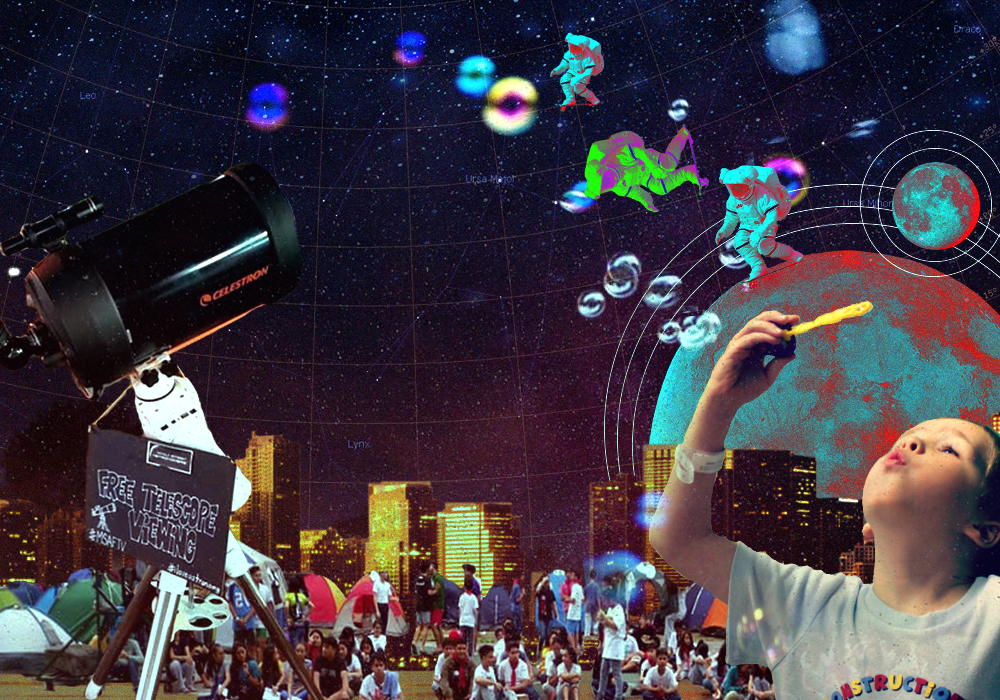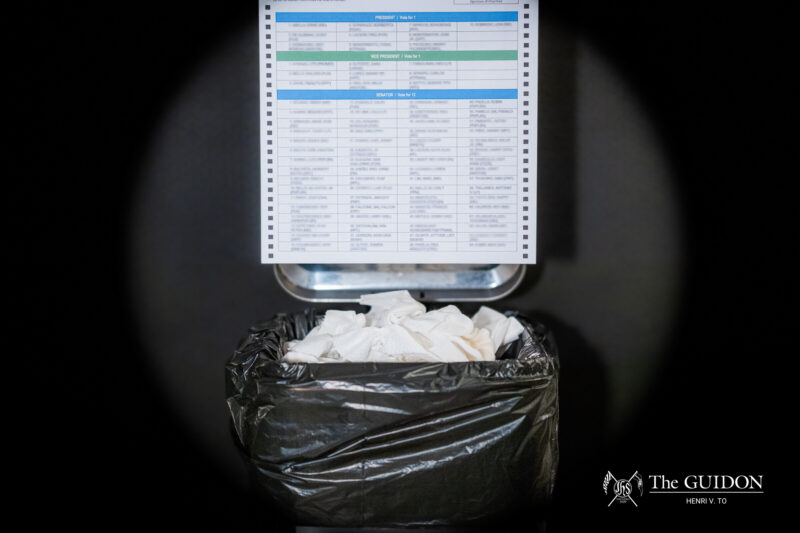It takes a minute out of your busy schedule to peer up at the night sky and see the stars, but for you to see a celestial body up close, it takes a telescope. Acquiring one of your own can be costly, though, but with free telescope viewings (FTV) the only cost would be time to go to a mall, a school, or an open field, where an FTV might be held by the Manila Street Astronomers (MSA).
Last October 28 saw the MSA hold their International Observe the Moon Night in Greenfield District, Lamp Quarters, and Alabang Town Center where different refractor and reflector telescopes were set to observe the moon, as the rest of the world did too, but fear not if you missed it. MSA holds Free Telescope Viewing events regularly all over the country. In FTV events, there will be at least one to as much as seven telescopes stationed; sometimes focusing on the same celestial body to accommodate the bulk of people, sometimes focusing on different ones simultaneously. Regardless of age, people line up to get a glimpse through the telescope. First-time viewers confirming the viewing’s cost, would always receive a volunteer’s reply, “none, it’s free!”
After having their share of the view, people often pull out their phones and capture a photo of the celestial body. Children will ask if there’s anyone in the moon—to which teasing adolescents and adults would affirm so. Nevertheless, both young viewers, adults, and elderly alike would always chime a common “Wow!” after every first view.
The road less taken
Several images come to mind when one hears the word “astronomy”–bright stars speckling a night sky, the dazzling motions of heavenly bodies, and the start or the end of a universe. It is not simply a matter of what there is out there, but rather, “Where are we in the middle of everything?”
Humans have long used astronomy for a variety of applications. For instance, through careful observation of heavenly bodies and astronomical events, humans have created religions and predictions of the future alike. Humans soon developed this study to which we now call ‘astrology’ into more practical uses: navigation, time standards, and agricultural seasons. All of this amasses what we know of astronomy today–a complex mixture of hard facts and precision enveloped in a thin layer of curiosity and wonder.
Nevertheless, this spark of wonder is hard to come across in urban life. However, environmental circumstances make it difficult for city people to appreciate astronomy and its beauty.
Ateneo League of Physicists (LeaPs) President Jayson Medina, an applied physics and materials science engineering senior, highlights this while discussing the organization’s plans for a stargazing event next year, during the Philippine Astronomy Week in February. “One of our main problems throughout the years is that weather forecast[s are] becoming more erratic. We can get suddenly cloudy weather during the night, so we can’t view the stars anymore,” he says.
Weather is not the only environmental problem for urban astronomy–even streetlights can be a hindrance to the curious stargazer. According to Medina, one of the advocacies for the stargazing event is light pollution awareness. “It’s a well-discussed advocacy, but it’s not something people can do much about because we do need light in the evenings. It definitely hinders us to view the stars as they are in the night sky,” he says.
Behind the eyepiece
Astronomy remains a study that involves precise instruments and tools. A good astronomy telescope can range from around USD 250 (approx. Php 13,000) to USD 400 (Php 21,000). Those are adamant about astronomy may purchase their own equipment, or even pursue a related degree; but for the average civilian, stumbling upon a free telescope viewing or simply gazing at the stars becomes the bridging opportunities. It is in the midst of these hindrances that the Manila Street Astronomers enters.
Founded in 2013, MSA is a non-profit organization with the vision of making astronomy more accessible to the people of Manila through sidewalk astronomy, where a telescope is made available to the public for entertainment or educational purposes.
The concept of MSA is based off of the ideas of John Dobson, founder of San Francisco Sidewalk Astronomers, who advocates that street astronomy is an avenue for educating people about what is beyond the human eye.
MSA Founder, Gary Andreassen, shares how it all began with his personal astonishment from seeing the moon through a toy telescope and his desire to share the same awe with other people. Beginning as a father and son gig five years ago in SM Southmall, Andreassen shares the unexpected influx of volunteers from varied backgrounds working together. “I did not expect that it would engender the amount of commitment and almost religious fervor it did.”
The organization flourishes because of its volunteers who likewise share the passion for free astronomy participation by setting up in malls or lecturing in schools. Abdur Alindao, a science educator and MSA member, adds, “We d0n’t choose the people [with] whom we share our passion and love for astronomy.”
Alindao shares that the farthest MSA has set up an FTV was at Zamboanga City last December 2017. Because their core advocacy is that “the highest and purest form of amateur astronomy is public outreach,” MSA plans nothing less than continuing these events whenever and wherever possible. In fact, MSA’s FTVs are not limited to malls or open fields, but even literally on the streets and outside fast-food chains such as McDonald’s.
Andreassen adds that the “Oohs” and the “Aahs” and the “Oh my Gods!” from looking through the telescope’s eyepiece assure him that MSA has not failed in extending the beauty of the vastness of the cosmos to anyone who wants to see.
Adjusting the aperture
As the season of giving draws near, the Manila Street Astronomers have lined up Free Telescope Viewing events for everyone to enjoy. Upcoming events appear on media headlines and are posted on Facebook, just like big events like the Super Blue Blood Moon, which happened last January 31, 2018.
There are still many opportunities for those who are interested in getting into astronomy appreciation. “MSA’s plans for the near future is to continue the [FTVs and school lectures] and hopefully be able to inspire more young people to take STEM courses,” Alindao says, adding that the MSA intends to conduct more events at more public spaces like malls and schools.
One doesn’t have to go far to appreciate the night sky; Medina shares that aside from the stargazing events of Ateneo LeaPs, there are weekly astronomical events such as meteor showers and partial or full lunar eclipses, which can be viewed with the naked eye. “Hands down, the best place [to view heavenly bodies] is either Manila Observatory or the HS football field because those places receive the least amount of light pollution,” Medina advises.
Through our own university organizations and groups outside of Ateneo, astronomy appreciation is no longer only achievable by those with the equipment. Nonetheless, while we’re not lining up for our turn for the telescope, it wouldn’t take much to look up at the sky, spot the stars that shine, and marvel at the wonders beyond and within our reach.
Related: Here’s how you can stargaze on campus even without telescopes.







